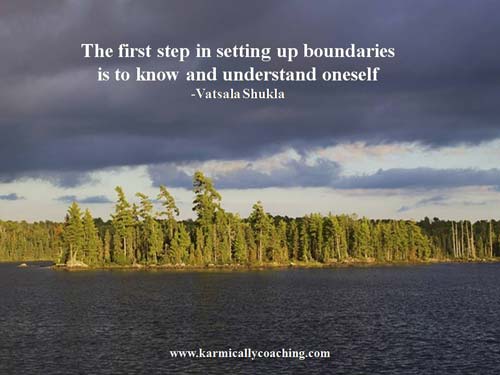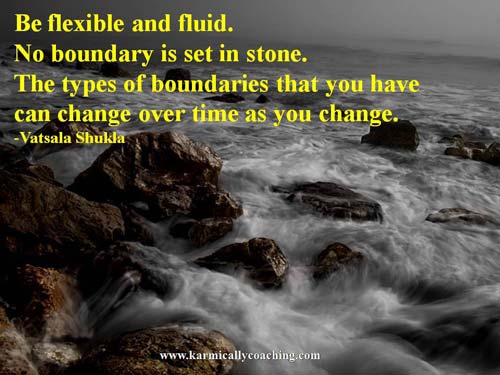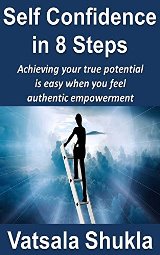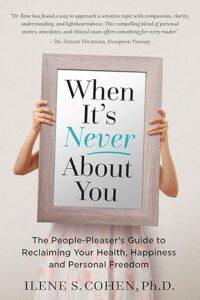
Personal Boundaries
Assertiveness, self-esteem and self-confidence are all linked to each other.
When you have a high sense of self-esteem you are able to assert yourself without showing up as aggressive.
Your body language and communications exude a sense of self-confidence. This in turn helps to attract the right opportunities and people into your sphere of influence.
Asserting ourselves and what we stand for in any aspect of our life can improve our self-confidence.
For that, we need to first set up our personal boundaries and set limits for others that are acceptable to us.
The story of Ruby’s journey to assertiveness and self-confidence
During my student days in London, I had a friend whom I will call Ruby (yes, friendship means we don’t reveal true names) who used to get walked all over by another girl.
We gave this other girl the code name Meanie in our student hostel.
Ruby would cry about it to the rest of us, get her cup of tea and counselling. She’d promise to be more assertive. 2 days later the cycle would be repeated.
Perhaps being the youngest in our group of girls on the corridor had something to do with it. Quite possibly it was also Ruby’s desire to be part of the group to which Meanie belonged because they were the IT group.
The fact that everyone else was wary of Meanie or the fact that this girl had no female friends and the IT group had only one girl member did not put off my friend.
She didn’t understand the value of belonging to a happy bunch of young women who had a purpose in life. We were a quasi-family for each other in a country far away from home.
Things finally came to a head when one evening, there was a loud bang on my door.
I found Ruby outside crying her heart out.
Over the cup of tea, I learnt that this time, Meanie had gone to Body Shop where my friend had a part-time job as a cashier and handed over a bottle to her for refill, without the money and run off with her Mauritian boyfriend while my friend was serving a customer.
Ruby got a dressing down from the Manager because the customer she was supposed to have been serving complained.
While the admonishing was justified, it was most upsetting. A warning had also been issued and that this was not the first time something like this had happened at work.
Unaware of what coaching or assertiveness training was at the time, we finally took the bull by the horn.
I gave Ruby an ultimatum. Either she brought tea bags and cake with her the next time she came crying to feed the set of 6 friends who were part of her support group, or she needed to stand up for herself and put her foot down.
In other words, to set up her personal boundaries.
Ruby had the assurance of the support group (who had by now all assembled in my room since the crying could be heard down the dormitory) that we would support her but the first step had to come from her.
It took time for my friend to become assertive but she eventually did much to everyone’s relief. The other girl suddenly found herself with no female friends.
Lesson on preserving self-esteem
This brought home a lesson on how people can damage their self esteem by letting other people use them, one way or another.
These people range from their colleagues, friends and even family, to strangers they meet on the street.
Meeting people, talking to them and other interactions should be relaxing and a connection based on mutual trust and respect.
But it is not like instant coffee and one has to work on these connections and relationships to ensure that they meet our needs as well as those of the other party.
If you don’t want others to use you, then you need to set up clear and concise boundaries – even with family.
There are 2 ways in which people can use or abuse you:
- By getting your various resources, without giving you something of equal practical value in return, or
- Compelling you to repress various sides of your personality, which makes you less authentic.
It is one thing to be kind and nice and quite another to be putting the needs of others before yours. Particularly, when there is no mutual compensation or benefit.
Setting up personal boundaries is essential
Having personal boundaries means indicating by your behaviour, and verbally if the other person is so thick skinned as to not get the message (beware, some accomplished users have learnt the art of wearing the other person down into acceptance like a hard sell salesperson) of what you are and are not willing to do, of what you will and will not tolerate from others.
Having well established boundaries allows you to build healthy, non co-dependent relationships and live a normal healthy life.
It is similar to the way cats claw the trees to establish territory and male dogs urinate on trees and lamp posts.
Two dogs in my building actually do it on the wall near one of the entrances and you know it’s there because the other dogs run!
As humans, we have the benefit of being able to set up boundaries using psychology, communication skills, body language and more subtle actions than our animal friends.
The first step in setting up boundaries is to know and understand oneself
This means to introspect and ask oneself
- What do I want and not want
- What am I comfortable
- Is there any action, speech or behaviour of others that makes me uncomfortable
- At what point do I feel that someone has overstepped a limit
There are other questions to consider and writing them down helps.
Once you have an idea of what you are all about, it becomes easier to determine what your boundaries are. Chart out an action plan with the new information.
Remember to be flexible and fluid. No boundary is set in stone. The types of boundaries that you have can change over time as you change.

I go into further detail in the second part of this blog series on boundaries. Continue your journey here.
Additional Resources for Professionals who want to set Boundaries
Develop Your Self-Awareness
Any transformation or change starts with self-awareness. This is true for personal development as well as improving your Emotional Intelligence.
Read more about Developing Your Self Awareness guide and Workbook here. Or get this product immediately by clicking the image.
Self Confidence in 8 Steps
I’ve got a more detailed Self-help and Self-study program Self Confidence in 8 Steps on Kindle.
If you’re a Do It Yourself buff who wants the guidance but loves to fly solo, then read and apply the guidance in this book. Just click on the image!
Do you sometimes feel as if you exist only to satisfy others wants and needs, but never your own? Is your physical, mental and emotional health suffering as a result? Then you need this book!






 I adhere to the Certified Coaches Alliance Code of Ethics and Standards. A copy is available on request.
I adhere to the Certified Coaches Alliance Code of Ethics and Standards. A copy is available on request.
 Let's Talk through the Connect Form:
Let's Talk through the Connect Form: